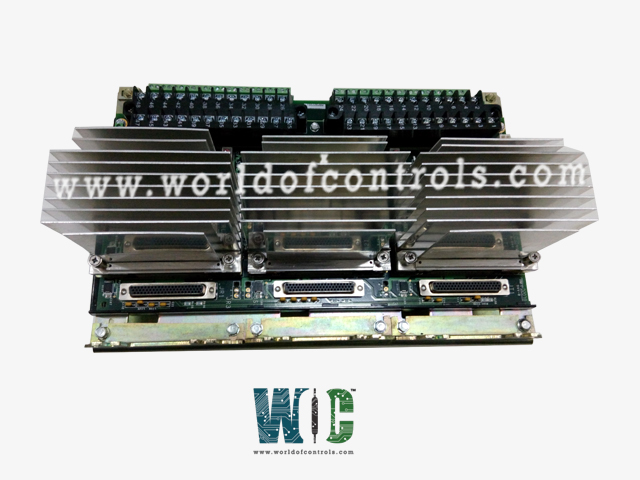
World Of Controls understands the criticality of your requirement and works towards reducing the lead time as much as possible.
IS230TSVBH4A - Vibration Input Module is available in stock which ships the same day.
IS230TSVBH4A - Vibration Input Module comes in UNUSED as well as REBUILT condition.
To avail our best deals for IS230TSVBH4A - Vibration Input Module, contact us and we will get back to you within 24 hours.
SPECIFICATIONS:
Part Number: IS230TSVBH4A
Manufacturer: General Electric
Series: Mark VIe
Product Type: Vibration Input Module
Power supply voltage: 24 V dc
Mounting: DIN-rail mounting
Technology: Surface mount
Operating temperature: -30° to 65°C
Size: 33.0 cm high x 17.8 cm wide
Repair: 3-7 Day
Availability: In Stock
Country of Origin: United States
FUNCTIONAL DESCRIPTION:
IS230TSVBH4A is a Vibration Input Module manufactured and designed by General Electric as part of the Mark VIe Series used in GE Distributed Control Systems. A Vibration Input Module is a device or component used to detect and measure vibrations in various applications. It is commonly used in engineering, industrial, and research settings to monitor the behavior and performance of machines, structures, or systems.
KEY FEATURES OF A VIBRATION INPUT MODULE MAY INCLUDE:
Sensor Interface: It provides connections to attach various types of vibration sensors such as accelerometers, velocity transducers, or displacement transducers.
Signal Conditioning: The module may have built-in signal conditioning circuits to amplify, filter, and convert the raw sensor signals into usable data for further processing.
Data Acquisition: It includes analog-to-digital converters (ADCs) to convert analog sensor signals into digital data that can be easily processed by a computer or controller.
Data Processing: The module may have onboard processing capabilities to perform real-time calculations, filtering, and analysis of vibration data.
Communication Interface: It allows data transfer between the module and external devices like computers, programmable logic controllers (PLCs), or data loggers. Common communication interfaces include USB, Ethernet, RS-232, or wireless options.
APPLICATIONS OF VIBRATION INPUT MODULES INCLUDE:
Condition Monitoring: They are used in predictive maintenance programs to monitor the health of machinery, helping detect early signs of potential faults or failures.
Structural Health Monitoring: Vibration Input Modules can assess the structural integrity of buildings, bridges, or other infrastructure, providing valuable data for safety assessments.
Automotive and Aerospace Testing: Vibration testing is essential in the development and testing of vehicles, aircraft, and spacecraft to ensure their performance and durability.
Industrial Automation: Vibration Input Modules can be integrated into industrial processes to optimize efficiency and reduce machine downtime.
WOC has the largest stock of GE Distributed Turbine Control System Replacement Parts. We can also repair your faulty boards. WORLD OF CONTROLS can also supply unused and rebuilt backed-up with a warranty. Our team of experts is available round the clock to support your OEM needs. Our team of experts at WOC is happy to assist you with any of your automation requirements. For pricing and availability on any parts and repairs, kindly get in touch with our team by phone or email.
What is the function of the board?
The module connects one or two I/O Ethernet networks to the board via an electrical interface. It reads vibration or proximity data from various sensor types and provides this data to the control system.
How many sensor types can the module read?
The pack can read vibration or proximity data from the following sensor types: Proximitors, accelerometers with integrated output (Channels 1-3 only), Velomitor, or seismic.
What channels support proximitors?
Channels 9-2 only support proximitors, while channel 13 can accept either a Keyphasor signal or a proximity signal.